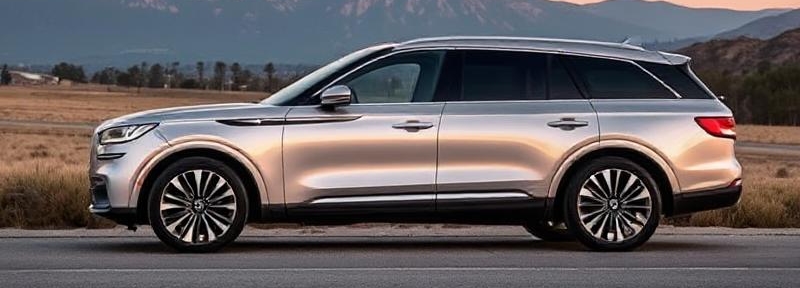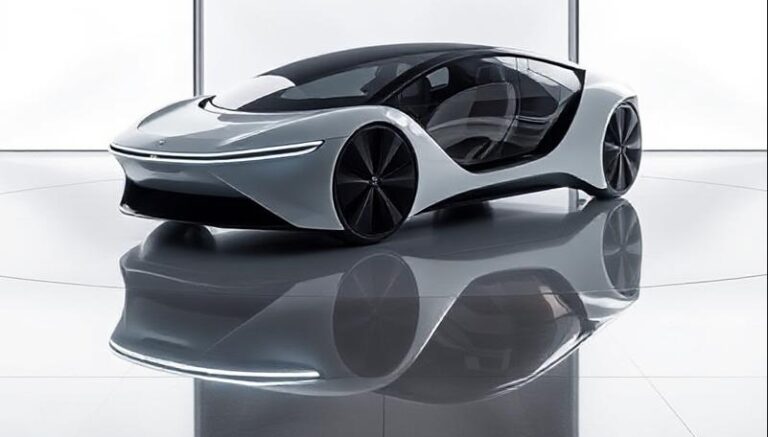The Evolution of the Lincoln Aviator: A Comprehensive Overview
The Lincoln Aviator, a mid-size luxury SUV under the Ford Motor Company’s Lincoln brand, made its debut in the early 2000s and has since experienced a number of transformations, reflecting both changing consumer preferences and advances in automotive technology. From its launch to its current iteration, the Aviator has established itself as a key player within the luxury SUV segment. This article will explore the evolution of the Lincoln Aviator, covering its production years, models, trim levels, and notable features.
First Generation: 2003-2005
The Lincoln Aviator was first introduced in 2003, marked by its classic, rugged design that appealed to the luxury SUV market. Designed to bridge the gap between the larger Lincoln Navigator and smaller luxury SUVs, the first-generation Aviator was built on the Ford Explorer platform.
Models and Trim Levels:
- The only trim level offered was simply the Aviator, which came standard with a well-appointed list of amenities, including leather seating, dual-zone climate control, and available navigation systems.
- Under the hood, it featured a 4.6-liter V8 engine producing 302 horsepower, coupled with a 5-speed automatic transmission.
- The Aviator was available in both rear-wheel-drive and all-wheel-drive configurations.
The first-generation Aviator was praised for its strong performance, smooth ride quality, and innovative safety features such as roll stability control and a sturdy body structure. However, the vehicle faced stiff competition, and consumers were quickly shifting towards crossovers, leading to a decline in production.
Production of the first-generation Aviator ceased in 2005. The model struggled to find a solid place in the market and was discontinued after just three years, with the last vehicles rolling off the assembly line in 2005.
.
The best Lincoln vehicles ever made, is yours on the list?
Lincoln’s Most Iconic Vehicles
.
Second Generation: 2020-Present
After a 15-year hiatus, the Lincoln Aviator re-emerged in 2018 at the New York International Auto Show as a concept vehicle and officially launched in 2019 as a 2020 model. With a complete overhaul, the new generation aimed to modernize the Aviator and restore its standing in the luxury SUV segment.
Models and Trim Levels:
The 2020 Lincoln Aviator was offered in several trim levels, which include:
- Standard
- Reserve
- Black Label
- Standard Trim: The base model came equipped with numerous luxury appointments, including a 10.1-inch touchscreen, a 14-speaker audio system, and active safety features like pre-collision assist and blind-spot monitoring.
- Reserve Trim: Adding to the standard trim, the Reserve featured enhanced luxurious amenities such as ventilated front seats, an upgraded sound system, and additional driver assistance features.
- Black Label Trim: The apex of luxury, the Black Label trim presented unique design themes, such as the “Flight” theme with rich leather upholstery and exclusive interior wood finishes. It also included services like complimentary car washes and a dedicated concierge service.
Engines and Performance:
The 2020 Aviator featured a powerful 3.0-liter twin-turbocharged V6 engine, offering 400 horsepower in standard configuration and an impressive 450 horsepower on the Grand Touring Hybrid version, which combined the V6 engine with an electric motor for improved fuel economy and performance. The hybrid variant boasted an impressive all-electric range, showcasing Lincoln’s commitment to blending luxury with sustainability.
With the new generation, Lincoln also emphasized driving dynamics and safety, introducing their Co-Pilot360 suite, which included advanced features for enhanced driver assistance, adaptive cruise control, and a top-tier, air suspension system that ensured a smooth ride.
Special Editions and Notable Features
The second-generation Aviator has been updated with flair and innovation since its introduction. One notable feature is the Phone as a Key technology, which allows drivers to use their smartphones to unlock and start the vehicle. The Aviator also features a high-quality interior with high-grade materials, a smooth, intuitive user interface, and ambient lighting—highlighting Lincoln’s dedication to luxury.
In 2021 and 2022, Lincoln expanded the Aviator lineup with limited-production editions, such as the Aviator Black Label Grand Touring, which combined powerful performance with electrification for a more eco-friendly driving option.
Recent Developments and Future Directions
As of 2023, the Aviator continues to be a flagship model for Lincoln. The architecture has remained stable, but subtle updates have refined the trim levels and included additional technology features that enhance connectivity and automation. Speculations about its future include potential electrification as the automotive industry trends towards a more sustainable lineup.
Trim Levels Update (2023 and Beyond):
While the main trim levels of Standard, Reserve, and Black Label remain, Lincoln regularly updates packages with the inclusion of various option groups, allowing consumers to customize their Aviator according to personal preferences. Features like advanced driver assistance, high-quality audio systems, and premium interior finishes provide countless options for prospective buyers.
Conclusion
The Lincoln Aviator’s evolution reflects broader trends in the automotive industry—from traditional SUVs to modern hybrid and electric vehicles. The transition from its first-generation model, with a focus on ruggedness and utility, to the luxurious and technologically advanced second generation demonstrates Lincoln’s resolve to remain relevant amid evolving consumer tastes.
With an established presence in the luxury SUV market and ongoing updates aimed at enhancing both performance and luxury, the Lincoln Aviator stands poised to continue as a significant player in the premium vehicle segment, spotlighting Lincoln’s prestigious heritage while embracing the future of automotive innovation.







